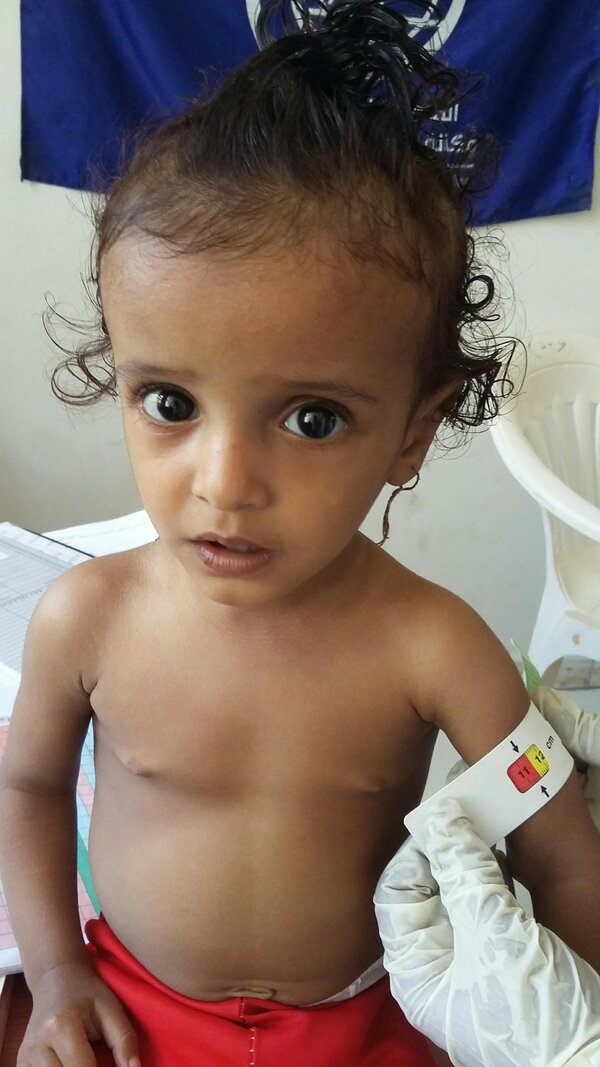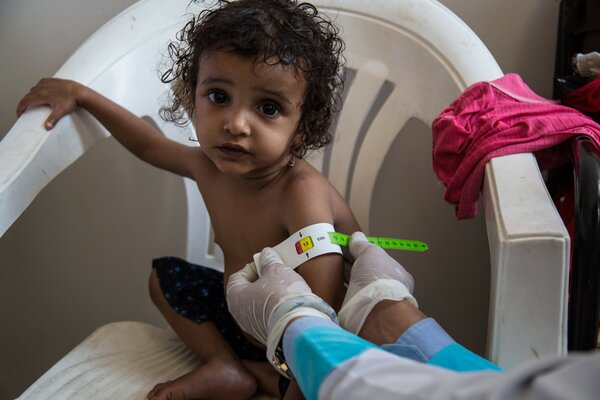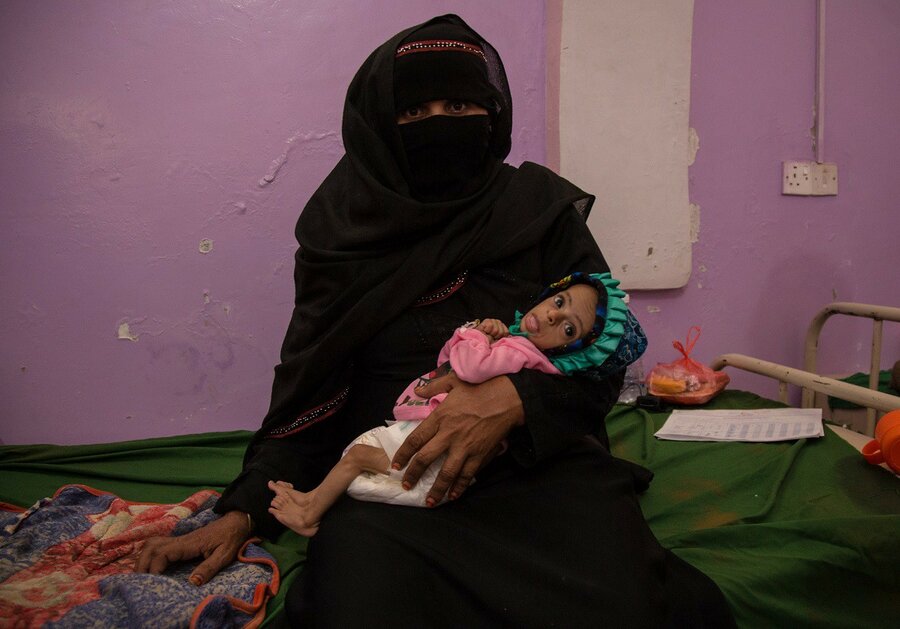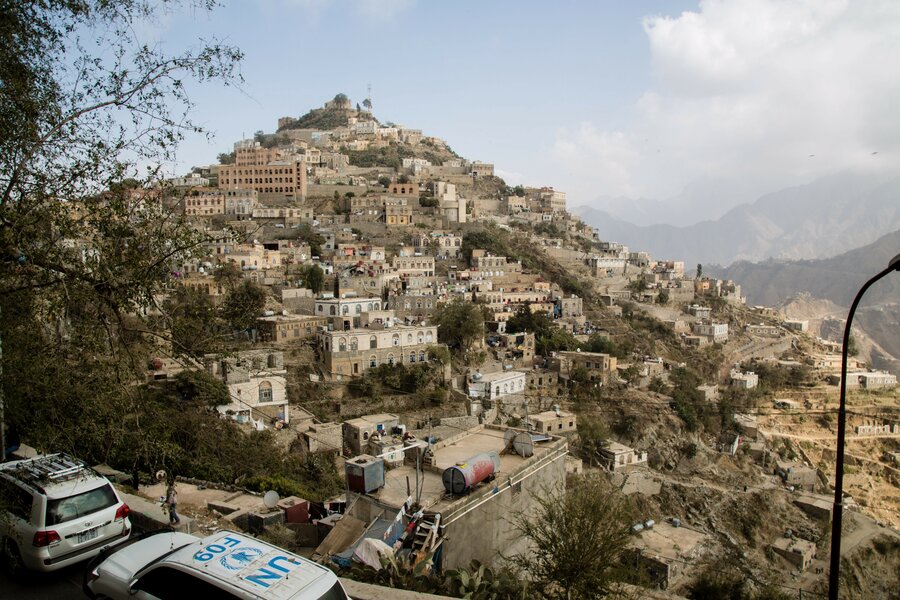Malnutrition: Yemen’s race against time
A nurse places the measuring tape around Rouida's tiny arm and pulls it tight.
"I was worried she would die," says her father, Abdul Rahman. He knows the fallout of war too well to mince his words.
Abdul is a qualified nurse, but has not had any paid work since the war started. He volunteers in the same small clinic where Rouida is being treated, in Al Kubri village in north-western Yemen. This could be seen as either a cruel irony, or a stroke of luck.
Rouida is two. She is still malnourished, but the day I meet her and her father, her arm circumference count shows mostly yellow. She has progressed from severe acute malnutrition — or SAM — to moderate acute malnutrition — or MAM.
At least, this is what counts for progress in Yemen.


SAM and MAM mean little to Rouida as she sits in her big sister's lap, eating the fortified peanut-based paste that the World Food Programme (WFP) gives to malnourished children. The little yellow square does hold meaning, however. It is visible evidence that she'll be better able to fight disease, grow and learn.
As the fourth anniversary of the conflict in Yemen approaches, over three-quarters of its people rely on humanitarian assistance to survive. Food prices have more than doubled. Unemployment has soared. Fuel and medicines are short as restrictions and closures at key ports have delayed the arrival of critical supplies. The riyal lost nearly half its value in 2018 alone.
Hope has come early enough for Rouida. But many other children are bearing the brunt of this conflict.
Of the three million who are acutely malnourished in Yemen, two-thirds are children. Malnutrition impairs growth and cognitive development. A shocking half of all children in Yemen are stunted. At this rate, malnutrition will create a lost generation. The loss of intellectual capacity will be felt for decades after fighting ends, and threatens to undermine Yemen's ability to rebuild.
But that loss can be contained through early intervention — and nutrition support to prevent malnutrition in the first place. The first 1,000 days are critical. The clock starts ticking at conception. By the time a child reaches their second birthday, the damage caused by malnutrition is irreversible.
WFP is running a race against time, massively boosting its malnutrition prevention campaign for 2019, striving to rescue this generation of children.
The organization is offering food supplements to those deemed most at risk. The aim is to reach 700,000 children— double last year's target. Some 300,000 pregnant and breastfeeding women should also benefit from preventative nutrition support, on top of the 1.6 million already malnourished women and children who will receive treatment in 2019.

The village of Al Kubri, which hosts the clinic treating Rouida, is perched somewhat improbably on the craggy steep slopes of a valley in Hajjah governorate. Hajjah's very high rates of malnutrition among children — up to 15 percent in some areas — place it in the nutritional emergency category. The north of the province, near the border with Saudi Arabia, has seen intense fighting, while the southern areas have become a refuge for many people fleeing conflict in other parts of Yemen.
The Al Kubri clinic sees children with malnutrition turn up most days. But when they don't, it's not necessarily a good sign. A drop in the number of new arrivals doesn't automatically mean a drop in the malnutrition rate. It is more likely that families are struggling to get to the clinic. Public transport in Yemen is limited, particularly in rural areas, and many can't afford it, so families often walk for miles to reach the clinics.
To bring help closer to those who need it, WFP is expanding the network of health centres with malnutrition treatment programmes to 3,000, up from 2,400 in 2018.

I'm new to Yemen: I only arrived earlier this year. I had seen the images of painfully thin children with their sunken eyes, skeletal frames and distended bellies. I was aware of the numbers — one in three children in Yemen at risk of acute malnutrition — but I'd assumed the camera had sought out the extremes to illustrate the severity of the crisis. I didn't realize how easy it was to find such severe cases at clinics and hospitals across the country.
Over in the larger city of Hodeidah, I asked a WFP colleague who works on nutrition how he coped with seeing the seemingly endless stream of malnourished babies arriving at hospitals and clinics. The port city has been the battleground for some of the most intense fighting.
"I must focus on the positive," he said. "They are getting treatment."
It was as emotional a reply as he'd allow himself. The race to save a generation leaves little time for tears.
